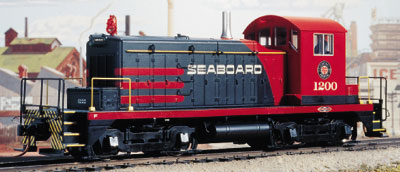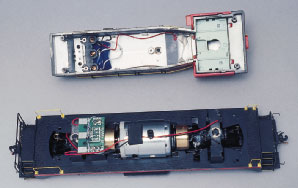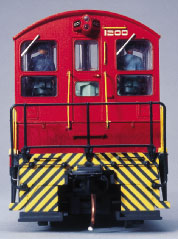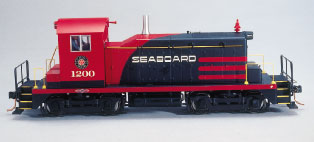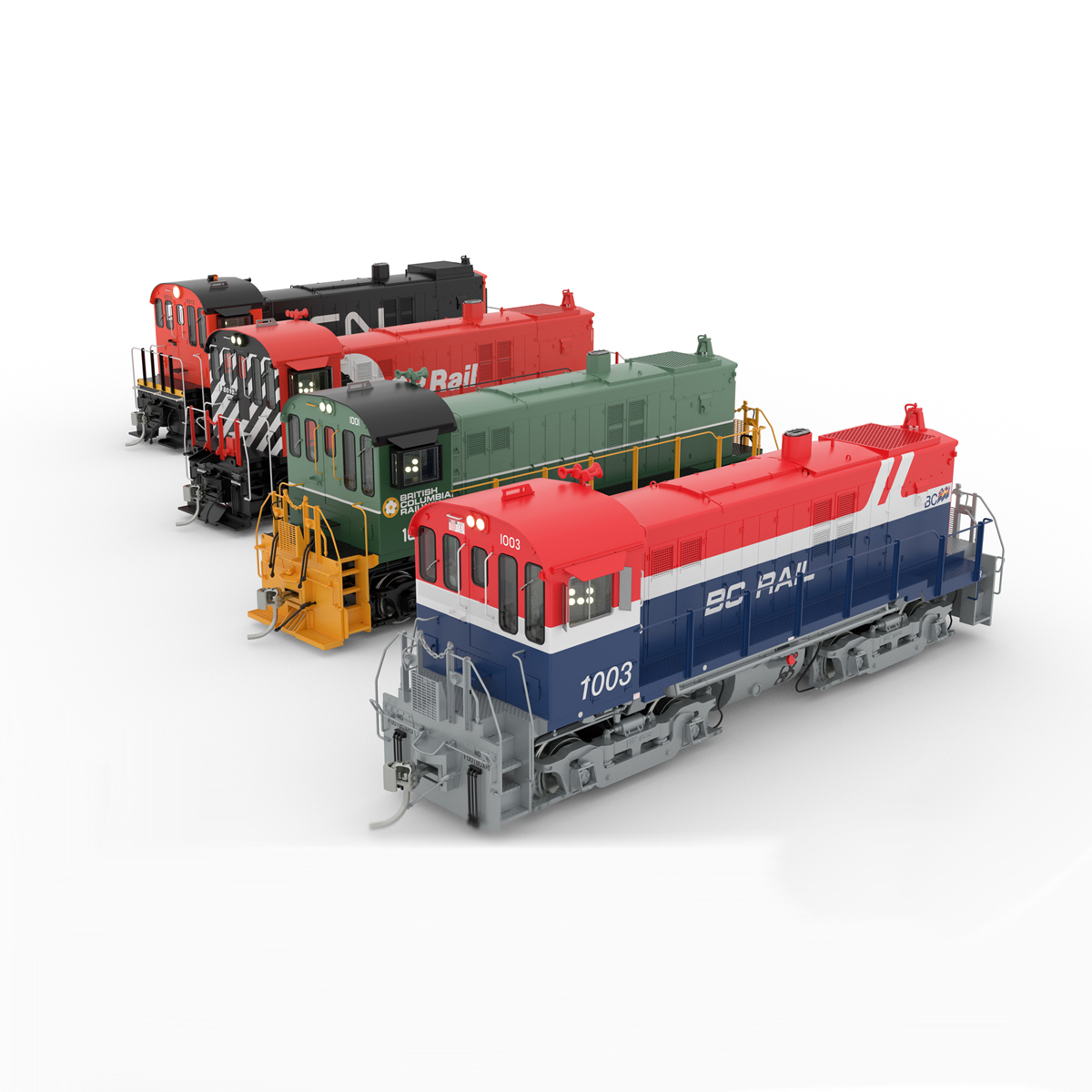General Motors’ Electro-Motive Corporation built the first SW1 switcher in January 1939, and by the time production ended in November 1953 the total built reached 661. The SW1 was bought by 38 major railroads as well as belt lines and industrial railroads. The biggest buyers were New York Central (105); Pennsylvania (85); Elgin, Joliet & Eastern (27); and Milwaukee Road (25).
The SW1 was the first locomotive to receive the reliable model 567 diesel engine, which laid the foundation for EMD’s dominance in the locomotive field for the next 40 years.
In a more logical locomotive naming universe you might assume that the SW designation stood for “Switcher,” but in fact the S stood for 600, the engine’s horsepower rating, and the W stood for Welded frame (as opposed to C for Cast.) You might also assume the SW1 was the first in the SW line, but in fact it was the second, succeeding the SW.
The SW1 is easily distinguished from its SW brethren by its short hood, giving it what’s often called a “puppy dog” look. Other spotting features are the single stack and the tool box on the deck in front of the hood.
Over the long run, the SW1s were underpowered for the needs of most major railroads, which tended to sell them off to smaller lines, as switching duties were assigned to more powerful and versatile road switchers. However, SW1s can still be found be in service at grain elevators and small industries.
S-Helper’s model represents an SW1 built before 1948, when the step-up at the rear of the hood was replaced by a straight taper. Our model checked out closely against drawings in the November 1991 Model Railroader. The detail is crisp and the paint job was well done. All of the handrails and grab irons are metal except the end railings, which are a flexible plastic. I had problems with breaking off the side railings next to the steps because, although they are metal, they’re inserted into plastic fittings and don’t extend into the running boards.
To remove the hood you must remove the four screws that come up through the metal frame. With the hood off, you can unplug the ribbon wire running from the AC reversing unit mounted in the top of the hood. To convert to DC, plug the adaptor into the vacated socket, or for Digital Command Control, just plug in a decoder.
For DC operations you don’t need the reversing unit, so remove it according to the instructions.
The engine is powered by a five-pole enclosed motor with flywheels at each end. The drive shafts are joined by universal joints to the rugged metal gearbox attached to each truck.
All eight wheels are driven and all pick up current. Code 110 wheels (which were in gauge) are included for operation on scale-size rail. To install them you first remove the four screws that hold the metal plate on the bottom of the truck. Remove the sideframes by poking a screwdriver down through the locomotive frame and prying the plastic casting away from the metal gearbox. This exposes the wheelsets and you can easily swap them out.
The metal plate you removed from the bottom of the gearbox has no function except to support the American Flyer-compatible coupler, so you can leave it off if you convert to body-mounted couplers. The holes are already drilled and tapped for mounting Kadee no. 802 couplers, which I added using the screws from the kit’s cover plate. These came out at the proper height.
A few more interesting conversion parts come with the kit. Should you want to use the short exhaust stack that came on early SW1s, just pull out the taller one and plug in the other. Be warned: Your crews may protest at having smoke in their faces and accumulating on the windshields. Real crews did, and that’s why most railroads quickly heightened the stack.
There’s nothing to prevent you running this engine with one or two others, even if they aren’t SW1s, but to look prototypical doing it you should use the extra endsills provided that include m.u. hoses and a fold-down bridge plate for walking between engines.
Our sample ran quietly and smoothly, although most real SW1s rarely topped 25 mph.
This is a fine piece of S scale machinery.
Price: $199.95
Manufacturer:
S-Helper Service Inc.
2 Roberts Rd.
New Brunswick, NJ 08901-1621
www.showcaseline.com
Description:
Ready-to-run metal and plastic AC locomotive (parts included for DC conversion)
Features:
DCC ready
Detailed cab with painted crew
Directional lighting
Drawbar pull: 2 ounces
Replacement m.u. pilots
See-through pilot tread
Weight: 16.5 ounces
Performance:
Minimum, midrange, and maximum speeds on filtered DC, straight track
Road names:
Boston & Maine*
Chessie System*
Chicago & North Western*
Lehigh Valley*
Milwaukee Road*
Pennsylvania RR*
Seaboard Air Line
Soo Line
Southern Pacific*
Western Pacific*
Undecorated
*Two different road numbers





